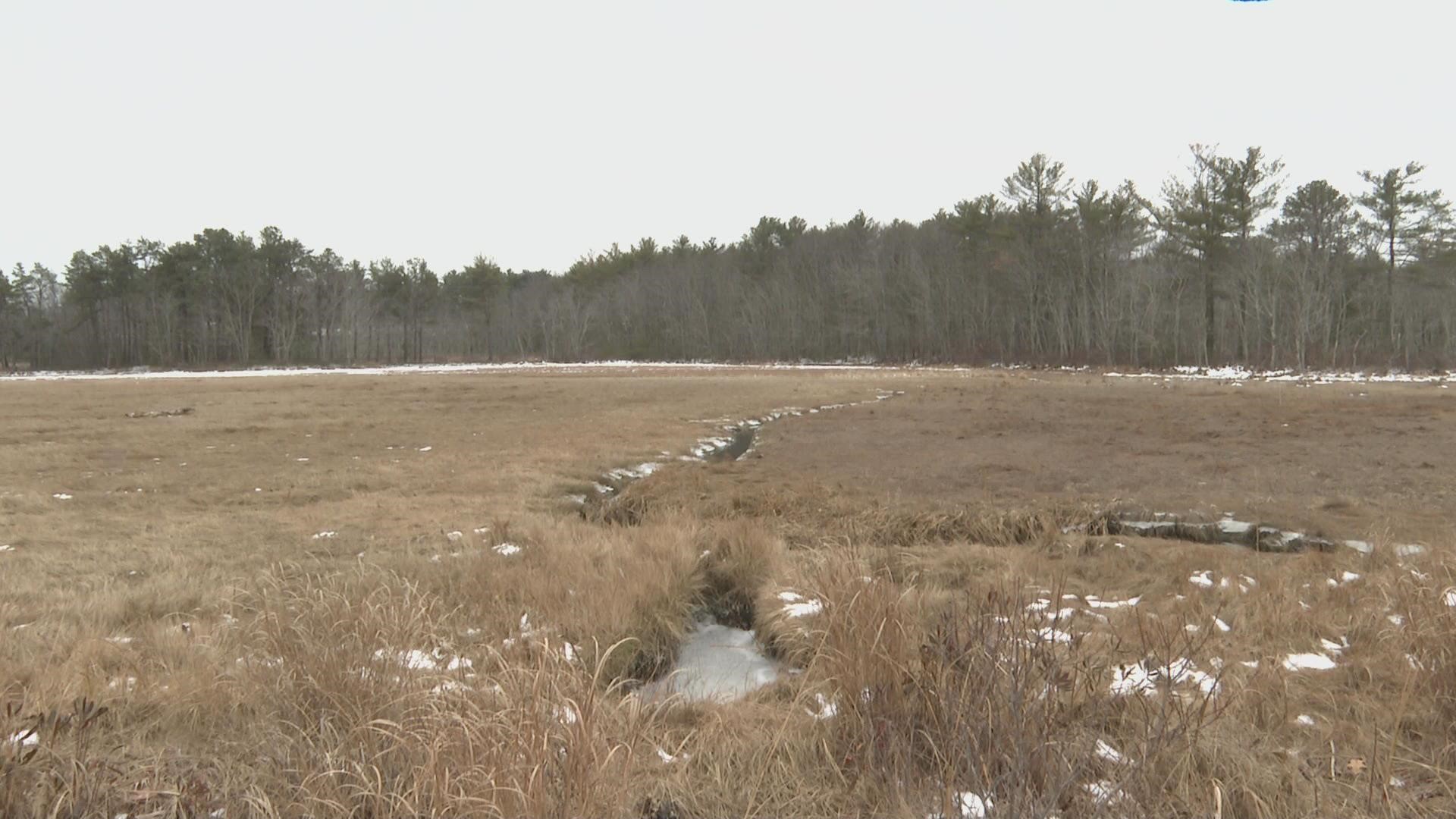YARMOUTH, Maine — An anonymous donation has helped take nearly 1,000 acres of Maine marsh land off the market, in an effort to better prepare the coastal wetlands for continued climate change.
The Maine Coast Heritage Trust announced it recently received the nearly $1 million donation, helping the trust purchase seven salt marshes from the York River Marsh in York to the Turner Stream Marsh in Cutler.
Marshes play an important role as diverse aquatic plant and animal habitats, and they protect uplands from erosion, Jeremy Gabrielson from the trust explained. The saltwater wetlands are expected to migrate to higher ground as sea levels rise. Gabrielson hopes conserving the land will allow it to migrate freely over the next century of change.
“The idea with this project is we’re looking to protect places that have current marsh, like this marsh we’re standing on now, But [also], where there’s an opportunity for marshes in the future,” he said, looking out across Cousins River Marsh in Yarmouth. “Given sea level rise projections, we expect that a lot of the marshes that we have today aren’t gonna be here, at least not in the same form in 100 years.”
On a brisk January afternoon, Susan Adamowicz walked along the public Atlantic Way Trail, which winds across a massive marsh in Wells. She is the land management and demonstration biologist with the U.S. Fish and Wildlife Service.
Like at Cousins River, European settlers in the 17th, 18th, and 19th centuries shaped earth embankments into the Wells marsh to direct water flow and farm salt hay, Adamowicz explained. Now, human-influenced climate change is impacting what Maine’s marshlands will look like over the centuries to come.
She came to a clearing and pointed toward rows of decaying trees that line an edge of the marsh.
“It is a phenomenon that is being caused by marsh migration,” she said. “With sea level rise, you get saltwater intrusion, and trees are freshwater creatures, so, they don’t like salt on their roots. Also, what can happen, is as the seas rise, they’re pushing the fresh water on top of them higher, so, you can have a higher water table in areas where the salt water is coming in underneath.”
In addition to its importance as an ecosystem for plants and animals, the Wells marsh, like many others like it, plays a part in protecting nearby communities from storms and erosion. Salt marshes are adapted to taking in daily tidal flows, briefly holding onto water and gradually releasing it, Adamowicz explained.
“Were it not here, we would still have an embayment with open waters that would be causing erosion, with storms they would fill up very rapidly,” she said, motioning toward the nearby homes. “There would be nothing to help hold the sea back.”
Gabrielson and the trust hope by purchasing these swaths of land, they can hold residential development back, and allow Maine’s marshes space to adjust, and continue being an unsung hero in a coastal ecosystem.

